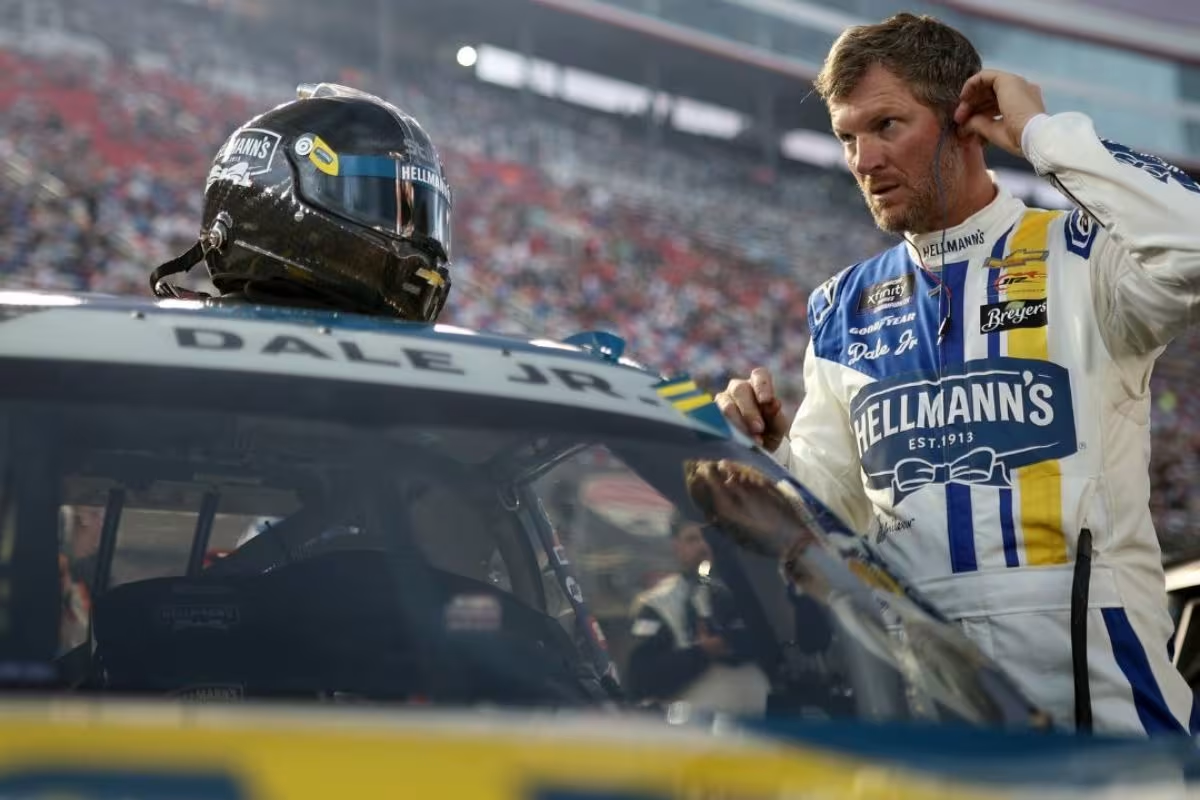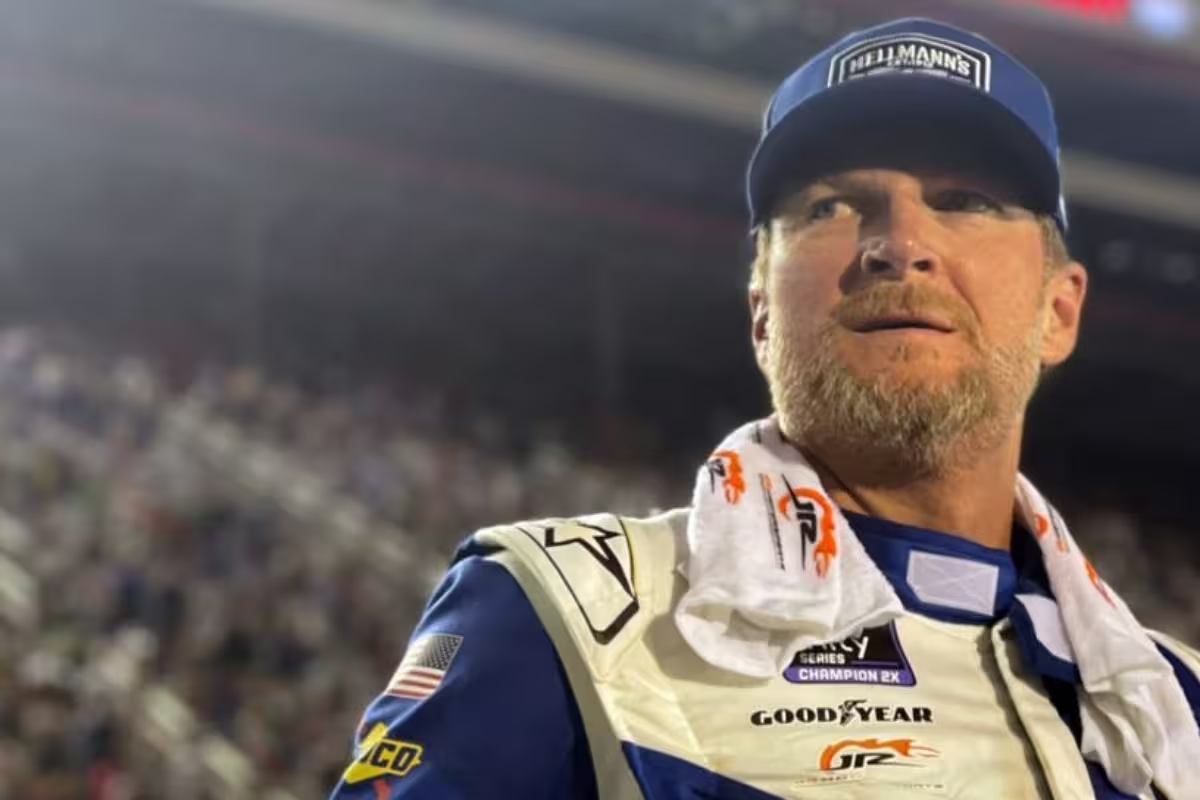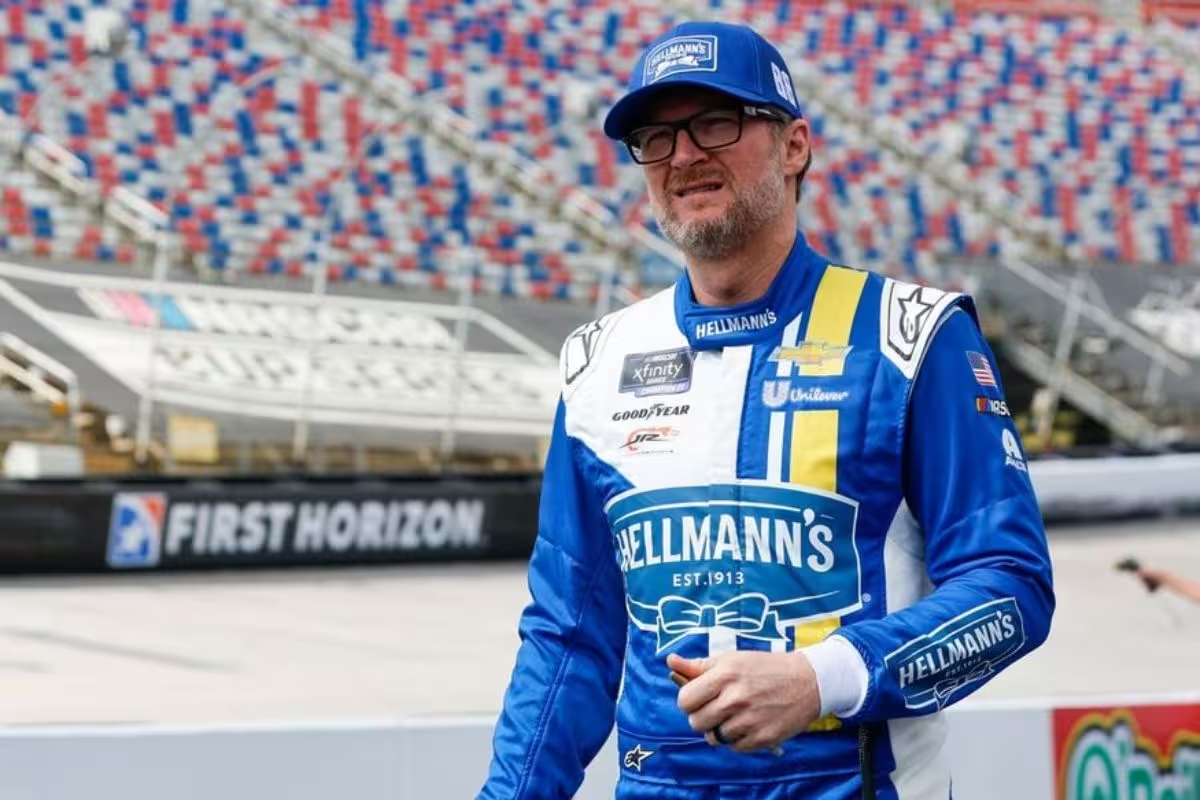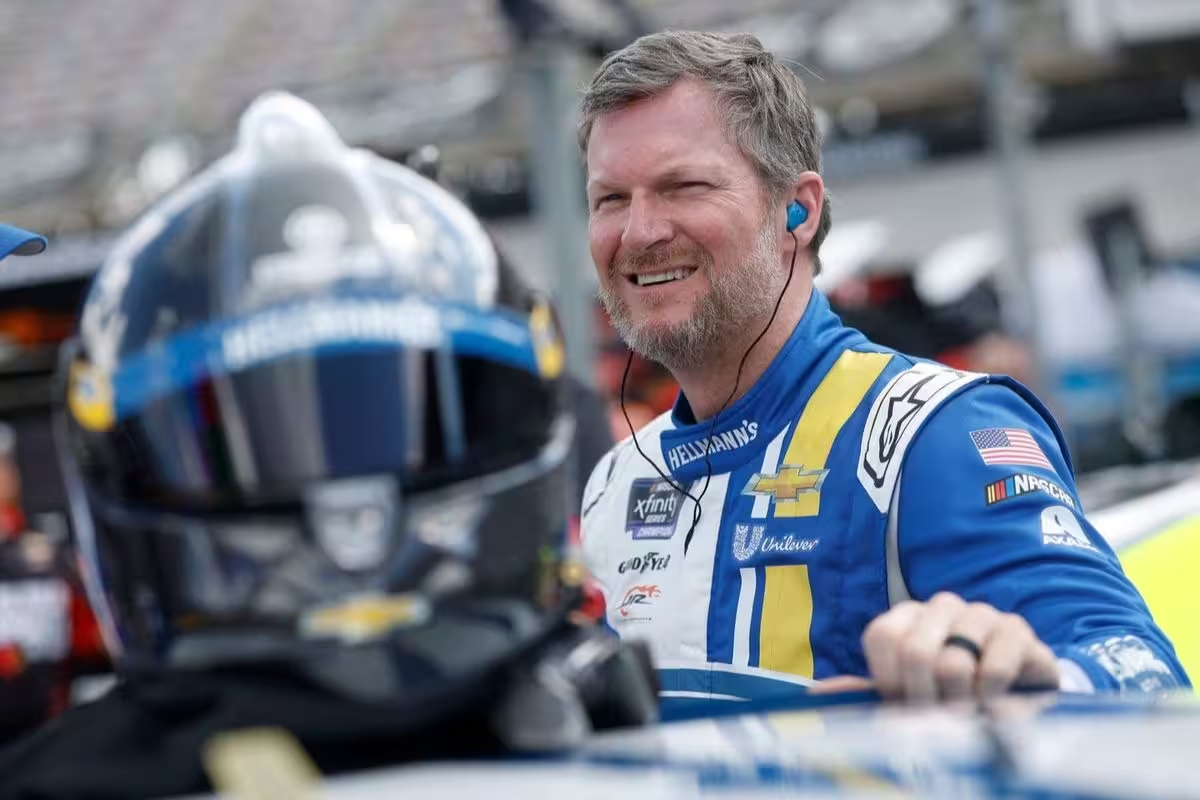Dale Jr.’s NASCAR Return: Dale Earnhardt Jr.‘s return to NASCAR at Bristol, a highly anticipated event, was overshadowed by a cascade of technical issues that thwarted what could have been a successful comeback. From mechanical failures to communication breakdowns, these problems not only affected his racing strategy but also posed considerable challenges to his focus and performance. Despite finishing 7th, the circumstances raise critical questions about the reliability of equipment and the impact of unforeseen obstacles on a driver’s success. What does this mean for the future of both Dale Jr. and the sport he has shaped?
Key Highlights
- Dale Earnhardt Jr. faced mechanical issues that significantly impacted his performance during the Bristol Xfinity race.
- Radio communication problems delayed his ability to coordinate with the crew, affecting race strategy.
- Swapping helmets mid-race disrupted his focus and introduced safety concerns.
- Broken glasses further complicated visibility, making racing conditions more challenging.
- Despite these setbacks, Earnhardt Jr. managed to secure a respectable 7th-place finish.
Dale Earnhardt Jr. Faces Technical Issues During Bristol Xfinity Race
Dale Earnhardt Jr.’s much-anticipated return to the Bristol Xfinity race was marred by a series of mechanical challenges that tested not only his skill as a driver but also the resilience of his team.
From the outset, the NASCAR Hall of Famer encountered an array of mechanical difficulties that complicated his comeback. Starting from an optimistic 13th position, he soon found himself covering with the absence of his spotter’s guidance—a critical element in maneuvering the tight turns and high-speed straights of Bristol.
“New helmet doesn’t f-king work.”-(DALE JR.)
As his team worked tirelessly to rectify the radio communication issues, Earnhardt’s challenges compounded. He faced the discomfort of swapping helmets mid-race, a situation that not only disrupted his focus but also posed a potential safety risk.
Furthermore, broken glasses further hindered his visibility and concentration, adding another layer of complexity to an already difficult race.
Despite these setbacks, Earnhardt Jr. displayed remarkable tenacity. His ability to adapt under pressure ultimately culminated in a commendable 7th-place finish, reflecting both his driving skill and the team’s steadfast determination.
While mechanical issues can overshadow even the most skilled competitors, Earnhardt Jr.’s experience at Bristol supports the notion that success in motorsport extends beyond raw talent—it is a demonstration of teamwork, adaptability, and the indomitable spirit of a seasoned driver.
The No. 88 Chevrolet Returns After a Year
The long-awaited return of the No. 88 Chevrolet marked a pivotal moment for Dale Earnhardt Jr. and his loyal fan base, as the iconic car had remained dormant for an entire year. The vehicle’s absence from the track not only shows its significance in Earnhardt’s storied career but also amplified the anticipation surrounding his return to competitive racing.
Last year, Earnhardt drove the No. 88 at the same venue, yet since that race, the car had been idle in the race shop, likely contributing to the myriad of problems encountered. The initial setback was a malfunctioning radio, which left Earnhardt unable to receive critical communication from his spotter, TJ Majors.
The team’s efforts to rectify the situation included swapping his helmet and replacing the wiring harness, temporarily alleviating the communication barrier. However, as the race unfolded, further complications arose, underscoring the challenges of returning to a competitive environment after a prolonged absence.
This return of the No. 88 Chevrolet was emblematic of both the nostalgia attached to Earnhardt’s legacy and the mechanical realities of modern NASCAR racing. The race served as a clear reminder that even the most celebrated figures in the sport must navigate the unpredictable nature of automotive technology, leaving fans hopeful for a more seamless performance in future outings.
Struggles Continue with the Radio
Amid the mechanical challenges faced during his return, radio communication issues compounded Dale Earnhardt Jr.’s struggles on the track. The veteran driver faced an unexpected complication that not only disrupted his concentration but also notably hindered his performance.
After the initial stage, he candidly expressed his frustration about his new helmet, but the real issue lay deeper—he had lost contact with his crew.
As Earnhardt Jr. recounted on his podcast, the radio, essential for driver-spotter communication, became dislodged and fell into the floorboard of the car. This seemingly minor mechanical failure escalated into a substantial obstacle.
The radio’s volume was inadvertently adjusted, rendering communication from his spotter, TJ, far louder than anticipated. This situation left Junior in a precarious position; he was torn between the need to restore communication and the fear that attempting to retrieve the radio might lead to further disconnection.
This experience highlights the critical nature of seamless communication in NASCAR, where split-second decisions can define race outcomes. The inability to hear important instructions or warnings from the pit crew can lead to miscalculations on the track, amplifying the pressure on a driver already managing the complexities of a return to competition.
Finally, Some Relief
The realization of being able to communicate, albeit after a tumultuous period, marked a pivotal change in his race strategy. The radio, once a source of aggravation, transformed into a lifeline that facilitated crucial exchanges with his crew.
“Finally, the caution comes out, and I’m pulling this cord up – kinda like fishing without a pole. And finally, here comes the radio…And they’re talking to me, ‘What do you need?’ …And I’m like, ‘Ah, f-k!’ I’m working…Where can I put this damn thing? I tried to mess with the clip, the clip fell off the back of it. There’s no pocket or anywhere to put this…Finally, I stuck it in the water bottle…I set the radio down in there and then we were fine.”(dale jr.)
Dale's radio from his race at Bristol was full of gems just like this one. 😂💎 pic.twitter.com/qjPsqrZ2qA
— Dirty Mo Media (@DirtyMoMedia) September 24, 2024
In an act of sheer ingenuity, Earnhardt Jr. found a solution to the physical constraints of his environment by creatively stashing his radio within his water bottle. This practical solution not only freed his hands but signaled a mental shift, allowing him to refocus on the task at hand.
This moment of comfort, though fleeting, highlighted his resilience amidst adversity. It reinforced the importance of adaptability, a lesson that transcends racing and resonates deeply in any high-pressure scenario.
However, the newfound comfort was bittersweet, as it followed a cascade of challenges that left him contemplating his future in the sport. While he found temporary relief, the weight of his experiences lingered, shaping his perspective on a potential return to NASCAR.
Dale Jr. Focuses on Broadcasting
Stepping away from the driver’s seat, Dale Earnhardt Jr. is poised to welcome a new chapter in his career as he shifts his focus to broadcasting. With 26 Cup Series victories and a remarkable 15 consecutive Most Popular Driver awards under his belt, Junior is well-acquainted with the intricacies of NASCAR. His change marks not just a career shift, but also an opportunity to utilize his extensive racing experience to improve the viewing experience for fans.
As he prepares for a ten-race stint with Amazon and Turner Sports next summer, Dale Jr. acknowledges the challenges of stepping away from competitive racing. Despite his inclination to jump back into the driver’s seat, he recognizes the complexities of maintaining competitive edge without regular participation. His candid reflections on racing at Bristol underscore the steep learning curve that sporadic appearances entail, suggesting that even seasoned veterans feel the weight of time away from the track.
However, his commitment to broadcasting signifies a broader evolution in his career. By sharing insights from his storied past and providing analysis, Dale Jr. has the potential to enrich the narratives surrounding NASCAR.
“At 50 years old, jump in once run top 10. I know there were some guys named Gant and Allison that were winning races in their fifties, so I know it’s doable. It’s not anything too crazy. But not doing it every week, man, you’re certainly coming here feeling like you’re handicapped and got to drink the fire hose trying to figure out what’s going on and getting up to speed.”
“I love it, it was great. I mean, I got everything I wanted out of this and I’ll miss it next year. I’m certain I’ll probably sign up somewhere else trying not to already start thinking about where would I run, where do I wanna run.”(DALE JR.)
His enthusiasm for the sport remains palpable, and his shift to broadcasting not only keeps him connected to his roots but also guarantees that his voice continues to resonate within the NASCAR community. As he begins this new venture, fans can look forward to a unique perspective that only a driver of his caliber can provide.
News in Brief: Dale Jr.’s NASCAR Return
Dale Earnhardt Jr.’s return to NASCAR at Bristol shows the intricate relationship between technology and performance in racing. Despite facing considerable mechanical challenges and communication breakdowns, the ability to secure a 7th place finish exemplifies resilience and determination. This experience emphasizes the critical importance of reliability in racing equipment and team communication, elements that can profoundly influence outcomes. As Earnhardt Jr. shifts to broadcasting, insights gained from these challenges may inform future discussions surrounding the technological dynamics of motorsports.
ALSO READ: Dale Jr.’s Helmet Mix-Up at Bristol: NASCAR Insider Unpacks the Chaos




